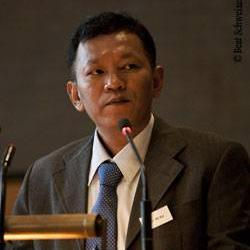Humanitarian Complicity in Genocide
- Penny Green and Thomas MacManus

- Jul 1, 2024
- 34 min read
Updated: Jun 27
This article explores an uncomfortable reality that locates international humanitarian and development organisations as sometimes unwitting, sometimes witting facilitators of the state crime of genocide and in doing so reveals the stark and sometimes lethal contradictions inherent in the overarching organisational goals and principles to which these organisations adhere. Our focus is on the Burmese/Myanmar Rohingya genocide, and the immediate pressures, moral dilemmas, and institutional strictures faced by humanitarian actors in the critical years following the 2012 Sittwe massacres, before the annihilation phase of the genocide in 2016/17.[1]
While the Genocide Convention defines genocide as ‘deliberately inflicting on the group conditions of life calculated to bring about its physical destruction in whole or in part’,[2] we favour a definition which captures both this outcome but also more significantly the processes which lead to destruction. Genocide is a process which begins with dehumanisation and ends with erasure. In between and often concurrent are occasions of litmus-testing violence, structural discrimination, state denial of persecution, forced isolation and ghettoisation, and systematic weakening.[3] The Convention definition was dogged by criticism from the outset, including from Lemkin[4] who was disappointed with the final iteration (including the exclusion of ‘cultural genocide’), the convention definition being the lowest common agreeable denominator.
We write elsewhere about the complicit role of elements of the United Nations (UN) in the Rohingya genocide.[5] Contextually, however, and given its widely proclaimed ‘moral leadership’ in the field of human rights, it is important to understand that the UN systematically failed to challenge the Myanmar government on the genocidal human rights abuses which were to lead to the effective annihilation of Myanmar’s Rohingya in 2017. Rather than demand the closure of the Rohingya detention camps the UN, through its Resident Coordinator and agencies, the UN Refugee Agency (UNHCR) and the World Food Programme (WFP), actively contributed to their sustainability through the provision of food and limited medical aid. In doing so it worked with the Myanmar regime to support a system of brutal apartheid in which the incarcerated Rohingya were reduced to ‘bare life’.[6] It suppressed its critics and silenced those who advocated against the regime on behalf of the Rohingya. By elevating development at the expense of human rights and by ensuring relations with the regime were conducive to UN access, the UN effectively colluded with the regime’s genocidal project. This is not to suggest that the UN (or indeed the humanitarian organisations we will now consider) in any way shared the genocidal intention of the Myanmar regime but that its actions and organisational goals served quite explicitly to facilitate rather than challenge the genocide.
The humanitarian dilemma
Angela Sherwood writes that:
bureaucratic practices of humanitarian organisations may result in harm to local communities, especially when such practices are embedded in state agendas for security and pro-capitalist development.[7]
Sherwood raises fundamental questions for the practice of humanitarianism generally but even more acutely for humanitarianism operating in the context of unfolding war or genocide. The opportunity to enact the saviour/victim binary, embodied in the practice of western international humanitarianism, crucially relies on the ‘welcome’ extended by offending states. Without access, the practice of direct humanitarianism cannot take place and as we shall see when we examine the practices of international aid organisations, and the UN, in particular, inside Myanmar, securing and maintaining access relies on political arrangements, relationships, and agreements which are disaggregated from, and frequently anathema, to field practice. Access becomes the holy grail—an end in itself—at the expense of those the access is designed to assist. Our observations of the humanitarian response to the unfolding Rohingya genocide suggested that while it was characterised by neo-colonialism it was a form of neo-colonialism utterly dependent on regime paternalism.




